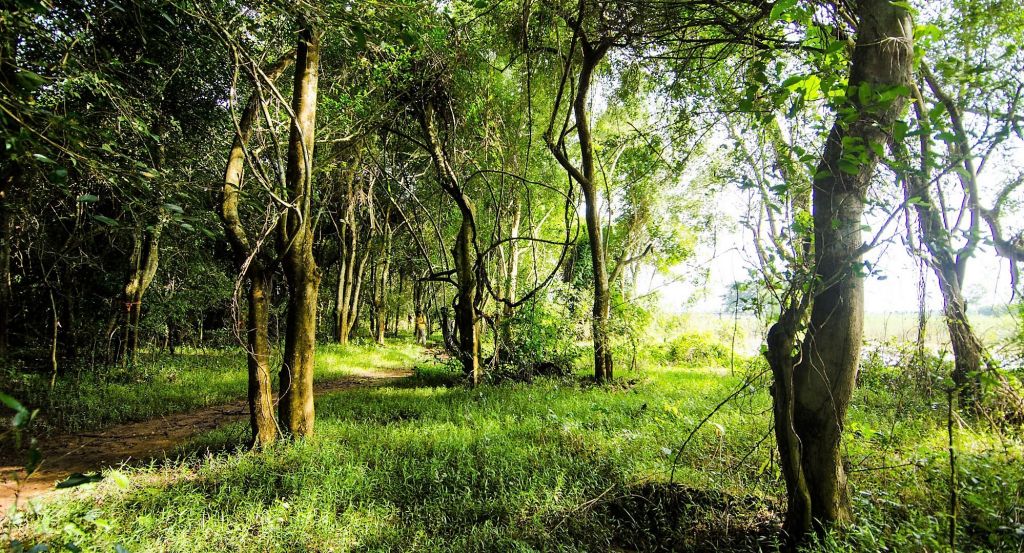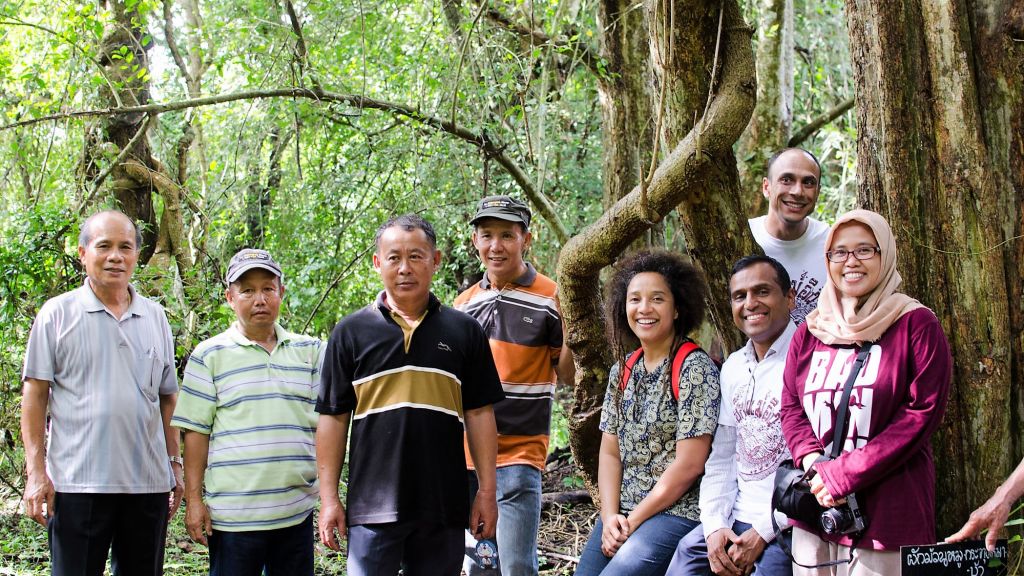Landscape approach: Lessons from the Ing Watershed in Thailand

Taking a landscape approach in implementing activities is central to RECOFTC’s upcoming strategic plan. A landscape approach focuses on stakeholders at a scale that is small enough to maintain a degree of manageability, whilst simultaneously operating in a context large enough to be able to deliver multiple outcomes to stakeholders with different interests. The approach emphasises the interdependence of natural resources, people and communities. All natural resources impact each other and their use is interconnected with existing social and economic systems.
The logic of landscape programming is that program staff and partners should always consider the impact of their activities on the broader landscape. For instance, a project aimed at improving social benefits through growing a particular plant in a community should consider the ways in which this activity might impact the wider social, financial and ecological systems (no matter what the actual goal of the activity might be). As no system stands alone in a globalized world, RECOFTC believes that taking a landscape approach is the way to proceed to ensure lasting improvements in human well being and healthy forests.
In fact, RECOTFC’s approach aims to build lasting relationships with all stakeholders and achieve a common vision for what that landscape should look like and provide in terms of services and products.
This blog reflects the lessons from conversations with several stakeholders, including local communities, civil society organizations, fishery department, royal forest department, and the chamber of commerce in the Ing Watershed in Northern Thailand earlier this year.
Our first lesson from the trip was that the objectives of all stakeholders have to be considered to accurately understand social and environmental impacts in a landscape. From an academic angle, it is important to understand the ambitions of all actors when measuring a landscape's (or community's) ability to adapt to climate change. Without knowing all players' intentions it is difficult to make future predictions about environmental or social impacts. Furthermore, from a social angle communities will be best off when local and external stakeholders collaborate for mutual benefits, such as income generation and sustainable resource management.
The second lesson, as shared by community representatives, was about the younger generations’ contributions to bring changes in forest management with the help of technology, specifically through social media. The youth in one community have contributed to an improved online system to store, manage and benefit from data for various natural resources. They also developed connections with young people who migrated from their villages to towns and cities to gain their support in information management. The youth in the community were able to build a new informal network and connect with other communities and forest department officials. These new avenues of information sharing have led to new opportunities for local people to understand the diverse resources in their landscape, as well as increasing youth involvement and leadership in sustainable natural resource management processes.
The third lesson was that improved management of landscape resources by local communities contributes to reforestation, rehabilitation of original species, and ecological restoration. Reforestation and the protection of wetlands has helped local people to deal with climate change impacts, such as preventing flash floods, which used to occur when their resources were depleted.

It was also clear that local people alone cannot manage the landscape where multiple actors have interests. Effective and sustainable landscape management requires mobilization of the migrant population; collaboration with multiple actors; use of information technology to share and learn; and importantly, long-term sustainable landscape planning with funding commitments from government, private sector and funding agencies. The need to consider multiple actors interests is also important if we are to avoid the more destructive elements that economic policies can have on environmental and social issues.
In managing ecosystems local people hold the key to effective landscape management and healthy landscape resources (e.g., water, forests and land). Their participation is crucial to build long-term solutions and prevent potential conflicts over resources. In fact, environmental and social issues cannot be addressed without the informed participation of multiple actors, including local women, men and youths and their access to relevant information. In the Ing Watershed, youth demonstrated their ability to organize and disseminate information, which was a catalyst to establishing connections between local communities, broader civil society and government. The Ing Watershed experience shows that informed participation has ultimately benefited the landscape, resources, environment and people living in the area.

Read more on RECOFTC in the Ing Watershed:
https://www.recoftc.org/press-releases/civil-society-groups-gather-ing-watershed-forum-world-water-day
For Thai speakers
More on RECOFTC’s work in the Ing River can be found here: https://www.recoftc.org/project/%E0%B9%82%E0%B8%84%E0%B8%A3%E0%B8%87%E0%B8%81%E0%B8%B2%E0%B8%A3%E0%B8%AD%E0%B8%99%E0%B8%B8%E0%B8%A3%E0%B8%B1%E0%B8%81%E0%B8%A9%E0%B9%8C%E0%B8%A5%E0%B8%B8%E0%B9%88%E0%B8%A1%E0%B8%99%E0%B9%89%E0%B8%B3%E0%B8%AD%E0%B8%B4%E0%B8%87
A video on the Ing River can be found here: https://www.youtube.com/watch?v=Oj9L0AZPwxs

